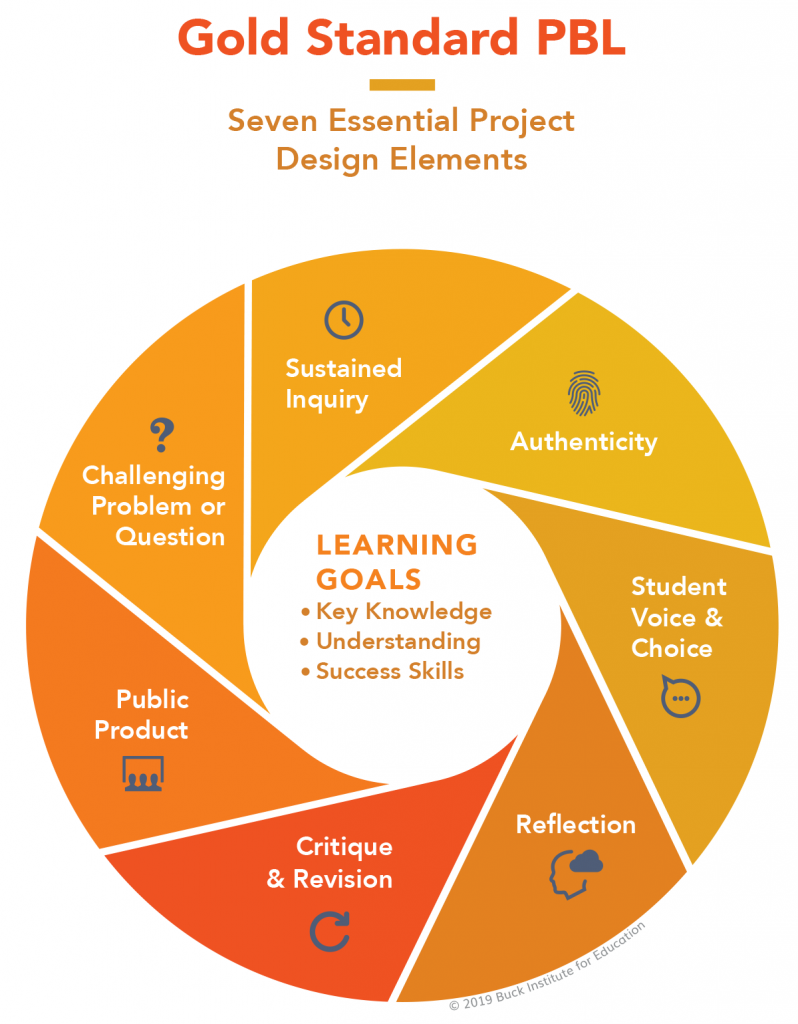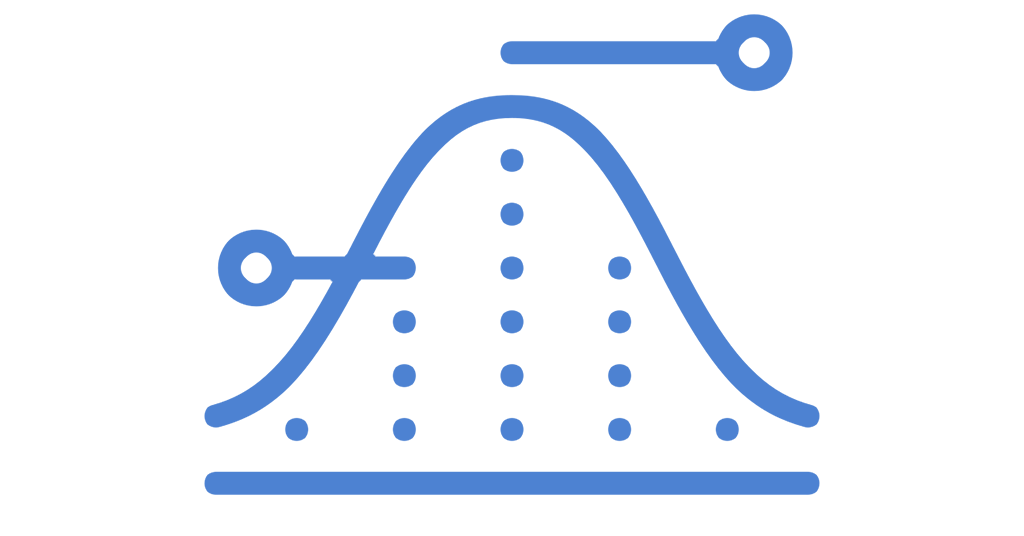This post supports teachers new to MYP Design, especially those from a U.S. public education background. MYP stands for Middle Years Programme, an integral part of the International Baccalaureate (IB) curriculum, a globally recognized educational framework.

The IB’s philosophy centers on developing inquiring, knowledgeable, and caring young people motivated to succeed and contribute in a globalizing world. Basically, in the IB, teachers want to ensure that kids have abundant opportunities to explore their curiosities, develop their smarts, embrace empathy, and be excited to do well and make a difference in our big, connected world. The MYP curriculum challenges students aged 11 to 16 to excel academically and grow personally, ethically, and emotionally.
The transition from the Middle Years Programme (MYP) to the Diploma Programme (DP) is designed within the International Baccalaureate (IB) framework to ensure a cohesive and comprehensive educational journey. The MYP experience offers a foundation in critical thinking and independent learning that prepares students for the DP’s rigor.
My first experience in the MYP was as an MYP Design teacher with Year 1 and Year 3 students (6th and 8th grades). Before the MYP, I taught in a traditional American curriculum in U.S. public and international private schools. I learned that teaching MYP Design involves a hands-on approach that blends creative and pragmatic problem-solving with real-world applications.
I enjoy newcomers, so working with Year 1 students was a good fit for me. Being very procedural and sequential within the MYP Design Cycle benefitted me as a teacher new to design and my students.
MYP Design Resources from the IB
The primary MYP Design resource for teaching MYP Design is the 67-page Middle Years Programme Design Guide (Sep. 2014 – Jan. 2015). It is an essential resource every new teacher in MYP Design should have readily available. This 14-15 MYP Design Guide differs slightly from the 62-page 2014 MYP Design Guide. The former has more details about supporting Year 5 students and the MYP eAssessment.

The Middle Years Programme Design Guide provides a comprehensive framework for teaching design in the MYP. It begins with an overview of design in the MYP and discusses design’s role across the IB continuum, its aims, objectives, and planning for learning progression. The guide details the invaluable MYP design cycle, interdisciplinary learning, and curriculum requirements.
Design Teacher Support Material
The Design Teacher Support Material (TSM) goes hand in hand with the MYP Design Guide. This design educator resource provides detailed examples of digital and product units with authentic and assessed student work. It’s set up more as a web page with navigational links rather than a full PDF like the MYP Design Guide. It used to be easier to access without needing to log in.
To ensure you have the latest MYP Design guidance from the IB, make an account first (free) and then wait a bit for your account confirmation. After confirmation and logging in, head to the tricky-to-find MYP Design Teaching Material area (another login maybe required). If this link doesn’t work, you may need to register for an IB role, then search under My IB. In addition to the 14-15 MYP Design Guide and TSM, you will find additional MYP resources here as well.
For answers to specific questions (e.g., MYP unit ideas, assessment strategies, helpful documents), check out the active and helpful MYP Design Teachers Facebook group.
Embracing the MYP Design Methodology
Switching to MYP Design from a traditional U.S. public school way of teaching (or another non-IB environment) might initially seem like a giant leap. Is it a whole new way of doing things? Our typical U.S. classrooms in public education usually focus on one subject at a time. But in MYP Design, many elements naturally mix and connect meaningfully via rich inquiry questions and connections to global contexts. If you appreciate making connections across disciplines in authentic ways and solving problems for others, then MYP Design should be a rewarding experience for you!
Project-Based Learning in Action
The project-based nature of MYP Design, with its focus on authentic problem-solving, can turn learning into an exciting adventure where students can discover and apply their creativity to solve real-world problems. Especially in the upper grades, it’s about doing and making an impact. Students get the chance to work on projects that can genuinely help others, making their educational journey educational, rewarding, and fun.
All areas of the MYP go beyond traditional academic boundaries. The curriculum is designed to encourage students to make practical connections between their studies and the real world, preparing them for success in further education and life beyond school.
Connecting Curriculums
I have found that MYP curriculum closely resembles the gifted curriculum in U.S. public education. The MYP philosophy, similar to typical U.S. gifted curriculums, emphasizes personalized, inquiry-based learning, critical thinking, and fostering creativity. Both areas share a constructivist approach, aiming to cater to students’ diverse intellectual and personal development needs.

Also, integrating STEAM (Science, Technology, Engineering, Arts, and Mathematics) learning into the MYP Design framework shows how flexible the MYP Design curriculum is and how well it fits with forward-thinking ways of teaching and learning. Just like STEAM, MYP Design encourages an interdisciplinary approach, bringing together various fields of study to approach problem-solving with creativity and innovation.
This methodology enhances students’ understanding and application of knowledge across different subjects and prepares them for the complexities of real-world challenges. The emphasis on design thinking in MYP mirrors the core of STEAM education, where students are empowered to think like designers and engineers, blending artistic creativity with scientific inquiry to create holistic solutions.
Core Principles of Teaching MYP Design
Central to the MYP Design philosophy is inquiry-based learning. This approach encourages students to ask questions, explore, and investigate–to go deep with their learning. As an educator, you facilitate this exploration, guiding students to discover and understand design concepts through their experiences and curiosity. Be prepared to explore lots of open-ended questions!
Navigating the MYP Design Cycle
The MYP Design Cycle is pivotal. It guides teachers and grounds students in the problem-solving process, which is at the heart of design. The cycle addresses design problems through:
These four steps (called criteria) teach students to think like empathetic designers, approaching problems systematically and creatively.

Your task is to help students navigate each step, ensuring they understand the importance of the design process in bringing their best ideas to fruition. Year 1 students especially need to be grounded in the 16 strands that comprise the four criteria.
Communication in the Design Process
It probably goes without saying that effective communication and teamwork are vital in MYP Design. Students collaborate, share ideas, and give and receive peer feedback. This practice enriches their thinking and leads to the best solutions. As a teacher, fostering a classroom environment that encourages open communication and teamwork is crucial, and things can get noisy!
Open and continual communication in the classroom encourages exploring various possibilities instead of focusing on a single correct answer. This approach is fundamental for inquiry-based learning. Open dialogue helps in advancing a broader understanding and improvement in big-picture thinking.
Inquiry invites exploration, which may result in tasks or projects that may seem unfinished–and that’s okay since design is a process. The MYP Design Cycle does help corral this richness of thinking and put it toward purposeful problem-solving.
Theoretical Knowledge to Real-World Challenges
MYP Design combines theoretical knowledge with real-world problems. This principle helps bridge the gap between classroom learning and the outside world, making the learning experience more meaningful and engaging for students. Year 5 students are often given more opportunities for independent learning and self-directed projects because they have developed more advanced research, critical thinking, and project management skills. Although Year 1 students may design in more contrived learning experiences, a well-conceived problem-solving scenario or the GRASPS model can provide students with an authentic context for learning.
Reflection in Learning and Design
Reflection is a critical component of MYP Design with a significant focus in Criterion D, which concludes a cycle in design. Students mindfully examine on their learning processes, choices, and project outcomes. This reflective practice deepens their understanding and helps them become more self-aware and responsible learners.

Because the MYP Design process is naturally reflective, thanks partly to the inquiry questions that drive and expand thinking and learning, each step in the design cycle offers opportunities for self-examination. Much of this introspection can be in the form of writing, which, in excess, can diminish the energy put into reflecting.
Writing in MYP Design
With her one-pager approach, Lenny Dutton took on the problem of writing in MYP Design (which can be a creativity killer and design should be fun, right?). In MYP Design, students often feel overwhelmed by the extensive writing required for each strand, leading to less time for creative exploration and improvement through exploration and trial and error. One solution is introducing “One-Pagers,” which encourage students to distill their formative work and critical ideas into a concise, impactful page for each criterion, enhancing focus, fun, and efficiency.
Adaptable and Flexible Mindset
The dynamic nature of MYP Design requires educators to be adaptable and flexible. A solution to a problem can nearly always be improved if given enough time and resources, so does designing ever really end? With regard to students, beginners benefit more from a deliberate and sequential process through every strand of the design cycle. More experienced students already grounded in the design process may need to jump around to find the best ideas and solutions more efficiently and intuitively.
Be prepared to alter your teaching methods based on student needs, inquiry explorations, project requirements, and the ever-evolving nature of design and technology.
Grading Systems: From U.S. Public Schools to IB
Generally, the US public school grades range from A (excellent, 90-100%, GPA 4.0) to F (failing, below 60%, GPA 0.0). The B, C, and D grades represent above-average, average, and below-average performances. Each has corresponding percentage ranges and GPAs. Variations like A- or B+ may be used for more specific grading.

The Diploma Programme (DP) uses a 1-7 grading scale that offers distinct achievement levels, resembling the A- F system and providing clear performance distinctions. Unlike the A-F grades, the IB scale uses criterion-referenced assessment, focusing on specific achievement criteria, not relative performance. This approach makes it a globally recognized academic performance measure especially useful for university assessments. Learn more about what IB Diploma Programme grades mean by Dr Matt Glanville.
MYP Grade Scale
The MYP uses a unique 1-8 grading scale called achievement levels or grade descriptors. These are called achievement bands when grouped in pairs (e.g., level 5-6 or 7-8). These milestones help show how well a student is doing and their progress over time. The idea is to make it easier to compare student performance across different countries–IB schools are worldwide. The scale helps to motivate students by acknowledging even minor improvements in their learning. It also supports teachers in giving detailed feedback to students, which can guide them on what they need to do to improve.
Go to page 32 in the MYP Design Guide to see the achievement band descriptions for Criteria A, B, C, and D for Years 1, 3, and 5.
Teaching MYP Design and Giving Feedback
In all MYP subjects, teachers must assess every strand of all four criteria at least twice each school year. This specific requirement ensures that students receive comprehensive feedback across all areas of the subject criteria, which is fundamental to the IB’s approach to assessment and learning. Figure 5 on page 30 of the MYP Design Guide shows how focusing teaching on each strand of the MYP Design Cycle will align with required assessment targets.

Diverse and engaging assessment methods offer constructive feedback, encourage self-regulation, and deepen understanding. Feedback-oriented assessments that provide regular, constructive insights help students identify their strengths and improvement areas.
Sometimes, giving feedback in MYP Design can feel like a lot of work–especially providing formative feedback in a timely way to support students with meaningful guidance for their summative projects. School schedules can be a factor in providing adequate time to teach. Year 5 student schedules might warrant more time in MYP Design in a week than Year 1 students in a school; however, educators may have little say in how often and for how long they see their students. The teaching of the entire design cycle, including inquiry and extensive writing, adds to this challenge.
Formative Feedback Ideas
Balancing the demands of providing timely formative feedback so that the summative can be the best it can be is always a challenge. Class schedules and students’ willingness to submit work on time are difficult to control.
Teachers can impact learning and honor feedback best practices via exit tickets, short quizzes, one-on-one quick conferences, notes on design portfolios, and verbal discussions for each criterion. These techniques stress the value of immediate feedback in targeting student learning needs and guiding their design journey.
Give lots of formative feedback early in the criterion assessment cycle. Year 1 students starting MYP Design especially need rich, specific feedback early on in Criterion A to understand the assessment-instruction relationship and help their focus. Since Criterion A starts the design process, formative feedback at this stage is critical.
For practical, project-based activities, particularly Criteria B and C, feedback can be most effective when given in real-time as students work. For Criteria A and D, more extensive written feedback on students’ work before final submission can be beneficial.
Showing students clear teacher-made examples and past student work helps them understand the design process better. It also shows them exactly what different scores, such as a “5,” look like, so they can improve their own work.
Documentation might be required for an IB audit of formative feedback since it supports the requirement that every strand of all four criteria be at least twice each school year. Two ideas are recording yourself giving verbal feedback and screenshots of your comments on a student’s portfolio documents. Utilizing semi-standardized canned responses for common errors and leveraging digital tools for efficient feedback delivery can help maintain high-quality feedback practices as well. These strategies support student learning, ensure compliance with IB standards, and promote educational best practices.
MYP Design Portfolio
Research highlights performance-based and project-based assessments as engaging ways for students to apply their knowledge in real-world scenarios, thereby making learning meaningful. MYP Design is naturally project-based.
Project-based learning with design portfolios allows students to showcase their understanding in various formats. The portfolio serves as a comprehensive record of a student’s progress and achievements in MYP Design, highlighting their skills, knowledge, and growth as designers over time.
Have students create and grow a design portfolio (sometimes called a design folder). This portfolio should capture evidence for the 16 strands in the MYP Design Cycle. In addition to writing, screenshots, photos, sketches, videos, audio files, etc., can document a student’s level of mastery per strand.
For example, a Google document can be set up for each criterion, explicitly addressing each strand for feedback and assessment within each. Four Google Documents for each criterion would comprise the portfolio in each MYP Design unit.
An MYP Design Cycle template can help focus teaching, learning, and assessment compliance. Adopting such strategies can help educators meet MYP assessment requirements without being overwhelmed.
MYP Design Unit
An MYP Design unit refers to a specific curriculum segment designed to teach students particular skills and knowledge within the MYP Design framework. Each unit is centered around a central concept or theme and incorporates the MYP Design Cycle—Inquiring and Analyzing, Developing Ideas, Creating the Solution, and Evaluating.

A very basic unit may consist of inquiry questions and the four criteria (with four strands each) as activities. A more comprehensive and compliant unit suitable for institutional memory purposes and IB evaluation processes is listed on pages 1 and 2 of the Evaluating MYP Unit Planners guide:
- Names of the teacher(s) involved
- Identification of the MYP subject group and the specific discipline; for integrated courses, detail the combined subjects or disciplines, and for modular courses, specify the discipline focus.
- The unit title, which could be framed as a question, topic, significant idea, or content requirement
- The total number of guided learning hours anticipated
- The primary key concept for the unit
- Any related concepts to be explored
- The global context and specific exploration guiding the unit
- The objectives for the subject group and the strands relevant to those objectives
- Task-specific clarifications, including how students are guided to understand the criteria and level descriptors
- Content details, including topics covered and how they align with local or national standards
- Descriptions of learning experiences, teaching strategies, plans for differentiation, and formative assessment approaches
- Resources required for the unit
- Reflections compiled before, during, and after the implementation of the unit
In the context of MYP Design, this framework underscores the importance of addressing differentiation and teaching strategies. It emphasizes the necessity of documenting interdisciplinary learning, which, while vital, might not be explicitly outlined in all MYP Design templates.
Students must engage with and discuss key concepts, related concepts, and global contexts. These aspects enrich learning by forging meaningful connections. Although these facets are generally not directly assessed within the MYP Design Cycle’s criteria, they can be seamlessly integrated into Criterion A (Inquiring and Analyzing) and Criterion D (Evaluating), where opportunities for research and critical evaluation naturally intertwine with these conceptual elements.
Product Design and Digital Design
According to the MYP Design Guide, teaching product and digital design together is possible and encouraged under certain circumstances. The guide outlines options for organizing design in schools, suggesting that design courses can be offered as distinct digital or product design courses, as a series of distinct courses, or as a single course combining digital and product design elements.
This flexibility allows for integrating digital and product design, enabling students to benefit from a comprehensive design education covering various skills and concepts. This broader experience setup is my preference. I taught four MYP Design units in a school year structured like this for Year 1 students:
- Semester 1 – product design (less complex)
- Semester 1 – digital design (less complex)
- Semester 2 – product design (more complex)
- Semester 2 – digital design (more complex)
Complexity is scaffolded to support the best-developing designers as time progresses. Since product design requires more preparation and clean-up time with more significant safety risks (e.g., glue guns and box cutters), I plan these units at the beginning of semesters when students are more inclined to follow instructions (i.e., they are less distracted by the siren song of approaching vacation time).
For more advanced students, a single MYP Design unit can combine digital and product design. This approach allows students to develop solutions that include physical and digital components. A combined unit could be something like a robotics kit that merges digital and product design, offering a hands-on learning experience that fosters creativity and problem-solving skills. Students would gain insights into programming and mechanical engineering by assembling physical components according to the design’s goal.
MYP Interdisciplinary Unit Planning
MYP Design is naturally interdisciplinary. Solving a problem for a target audience blends art, science, and humanities, emphasizing creativity, technical skills, and cultural insights. Focusing on diverse audiences drives interdisciplinary, culturally sensitive solutions that are both innovative and practical.
True interdisciplinary MYP units (IDUs) require deep preparation and planning. For more information, Check out Diane Smith‘s YouTube video about the what, why, and how of IDUs.
ATLs and Command Terms
By comparing and contrasting ATLs (approaches to learning) and command terms, teachers can better understand how they serve students in the MYP.
ATLs and command terms are related in that they guide students in their learning and tasks. Command terms are specific instructions that tell students what they are expected to do to demonstrate their understanding and skills in an assessment context (e.g., “analyze,” “describe,” and “evaluate”). In fact, each strand in the MYP Design Cycle begins with a command term. ATLs, on the other hand, are the skills students need to carry out these commands effectively.
For instance, when a task asks students to “analyze” (a command term), they may need to apply critical thinking skills (an ATL under “thinking skills”) to break down information into parts to understand its meaning. If a task requires students to “collaborate” (implicit in command terms like “discuss”), they will use social skills from the ATL framework to work effectively with others.

It may feel that ATLs and command terms state the obvious regarding good teaching, and this guidance could feel overprescribed. ATLs and command terms add even more required ‘stuff’ to account for in the MYP Design curriculum. Aren’t teachers naturally applying Bloom’s taxonomy to task requirements and supporting them with the necessary skills? Probably!
Regardless, a poster of MYP common concepts and terms in a classroom is a fantastic reference for building academic vocabulary and sentence- frames for rich discussion–especially for English Language Learners. By asking, “What’s the best way to ______ ? Teachers and students will focus on the ATLs to navigate and excel in each strand within the MYP Design Cycle.
The Benefits of MYP Design
MYP Design has been a fantastic experience that has elevated my planning and teaching for my students. I used to consider STEAM learning, with some constructivism, to promote engagement as an optimal learning experience.
I currently teach K-5 computer science in a U.S. public school and had fifth graders create Scratch-based mazes to help kindergarteners develop their mouse skills. Without an MYP Design teaching experience, I probably would have had students create a project in Scratch to learn coding skills. Maybe we would have added some Canva-made sprites to differentiate, but that’s about it.
Solving a tangible problem (mouse skills) for an audience (kindergarten) helped my fifth graders immerse themselves in a real-world context, making their learning experiences more authentic and engaging.
PBLWorks Gold Standard
Authenticity is a hallmark of MYP Design and is supported by the Buck Institute for Education’s PBLWorks Gold Standard.

Much of MYP Design is in tune with their research-informed model of project-based learning (PBL). The Gold Standard for PBL from PBLWorks outlines seven essential project design elements:
- Challenging Problem or Question
- Sustained Inquiry
- Authenticity
- Student Voice & Choice
- Reflection
- Critique & Revision
- Public Product
These elements ensure projects are engaging, meaningful, and rigorous.
The PBL Gold stand elements align well with MYP Design’s emphasis on inquiry, action, and reflection within real-world contexts. MYP Design projects often involve identifying real-world problems and developing viable solutions that resonate with the Authenticity and Challenging Problem or Question elements of PBL.
Hattie’s Effect Sizes and Design
Effect size measures the impact of educational interventions, with Dr. Hattie suggesting 0.4 as an average effect over a school year.

In MYP Design, certain high-impact practices identified by Hattie enhance student achievement, highlighting the program’s alignment with effective educational strategies. Here are a few MYP-Design-related practices that stand out:
Feedback (effect size 0.75): MYP Design emphasizes iterative design and feedback cycles, where students refine their projects based on critiques through the four criteria. This practice mirrors Hattie’s findings on the powerful impact of feedback. As mentioned in this post, formative feedback is essential for students to experience the greatest success possible in their summative work.
Self-reported Grades (effect size 1.44): Encouraging students to assess their work in MYP Design fosters self-reflection and self-regulation, aligning with the significant benefits of self-assessment highlighted by Hattie.
Metacognitive Strategies (effect size 0.69): In MYP Design, students are tasked with planning, monitoring, and evaluating their work as part of the design cycle. This approach aligns with Hattie’s identification of metacognitive strategies as highly effective for enhancing learning outcomes.
Teaching MYP Design – Summary
MYP Design, within the IB framework, enhances students’ educational experiences and prepares them for a world that values critical thinking, interdisciplinary connections, and creative problem-solving. It has many moving parts for teachers and students, but the benefits are worth it!
The holistic and comprehensive approach to learning fosters a deeper understanding of academic content across various disciplines. The MYP Design program is also fantastic for cultivating essential life skills such as empathy, collaboration, and self-reflection.
In closing, here are five practical tips to summarize the power and promise of MYP Design:
Leverage the Design Cycle
Familiarize yourself and your students with the four phases of the MYP Design Cycle: Inquiring and Analyzing, Developing Ideas, Creating the Solution, and Evaluating.

This structured approach helps you stay on target and focuses students to address design challenges and learn to think like designers systematically.
Embrace Inquiry-Based Learning
Use the MYP Design Cycle to encourage students to ask questions, explore, and investigate deeply. This approach enhances understanding of design concepts and fosters critical thinking and creativity, crucial for solving real-world problems. A culture of inquiry will nurture resilience, allowing students to navigate design setbacks without giving up.
Foster an Interdisciplinary Approach
Design is everywhere! It’s an essential aspect of nearly every part of our daily lives, often without us even noticing.
Encourage students to make connections across different subjects. MYP Design naturally integrates with other disciplines, providing a richer educational experience. Highlighting these connections helps students understand the relevance of their learning and how it applies in various contexts.
Provide Timely and Constructive Feedback
Use various formative assessment techniques to provide students with immediate feedback. This best practice could include exit tickets, quick quizzes, and peer reviews. Effective feedback helps students understand their strengths and areas for improvement, guiding them toward better project performance.
Focus on Authentic Problem-Solving
Engage students with real-world problems that require tangible solutions. This approach makes learning more engaging and relevant and helps students develop empathy and understand the impact of their work on others.
Shaping Tomorrow’s Learning
The path of MYP Design teaching is rich with opportunities for educators and students to grow, innovate, and solve meaningful problems. As you apply these strategies in your classroom, you’re not just teaching design; you’re inspiring a new generation of thinkers and creators. Continue to explore, question, and challenge!
